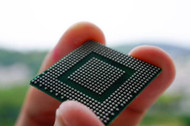Three Things to Know About BGA Re-balling
Posted by Staff - Soldertraining on Apr 28th 2022
Some electronic applications require the original equipment manufacturers (OEMs) to replace the soldered balls on the chip ball grid array as and when required. There are several reasons why you need to reball a chip. BGA is a type of surface-mount package that helps mount integrated circuits. The solder balls are arranged in a grid pattern on the undersurface package. It helps increase the area for connections and offers enhanced track density, robustness, high-speed performance, low inductance, and lower thermal resistance. In some cases, an older ball joint will require OEMs to recreate ball solder joints to extract work from that particular BGA chip. It necessitates BGA reballing to mitigate loose connections or customize configurations.
Outsource BGA Re-balling
BGA reballing is a highly-optimized and strategic process that must adhere to the best practices. Hence, you can outsource it to companies that are proficient in the process and leverage best practices to satisfy the requirements. These companies have access to a multi-disciplinary team with the necessary training and certification to conduct the BGA reballing processes. They can maintain the certification and qualification status on the BGAs’ existing configurations while improving their functionality and performance.
The BGA re-balling process
The BGA reballing process initially involves the removal of solder balls, cleaning of the package, and attachment of new balls, followed by the cleaning process. At the start of the reballing process, the stakeholder must inspect the circuit as per Quality Assurance Procedures (QAP). They need to effectively observe and follow the Moisture Sensitivity Level (MSL) requirements and adopt the proper deballing process as per the component. The ball placement in reballing uses high-accuracy assembly tooling.
Using appropriate tools, processes, and standards, the OEM must measure the circuit board's true position, co-planarity, and flatness. They must observe and adhere to the customer specifications for ball placement and ball size/position tolerance needs. Once the balls are attached, they need to leverage post-ball-attach cleaning procedures and monitor them to ensure that it is performed effectively. There is a provision to customize reflow solder profiles for each component. The final inspection Is performed as per QAP.
Why does the BGA chip need Reballing?
BGAs show enhanced durability as compared to the traditional arrays. But, the connections on the chip tend to become loose over time due to extended use or exposure to harsh conditions. Thus, reballing the BGA grid becomes crucial to avoid any malfunctioning of the PCB. Since the technology market is evolving at a fast pace, it requires the upgradation of the device and BGA chip to keep up with the changes. It is possible via BGA reballing, enabling the equipment to remain functional for a longer term. Reballing is also essential when the PCB motherboard must undergo graphic chip up-gradation. The normal heating cycle of PCB can cause the “ball” in BGA to become unreliable. Heating can also cause the underneath solder ball in the BGA chip to melt and lead to solder bridging, rendering reballing important. Faulty BGA chips must be reballed to deliver optimum performance.
To Conclude:
These are a few things you should know about BGA reballing. Outsourcing allows you to assign qualified and trained manufacturers to take your project and deliver it as per specifications.





